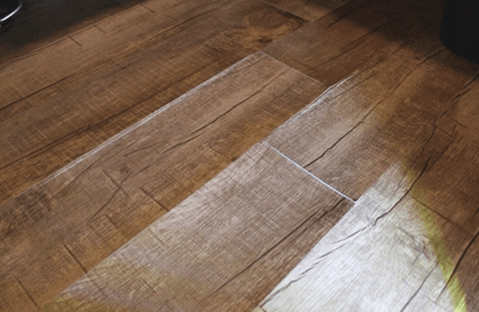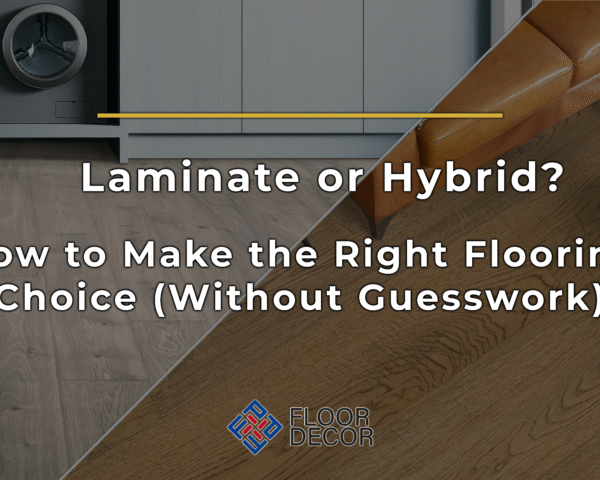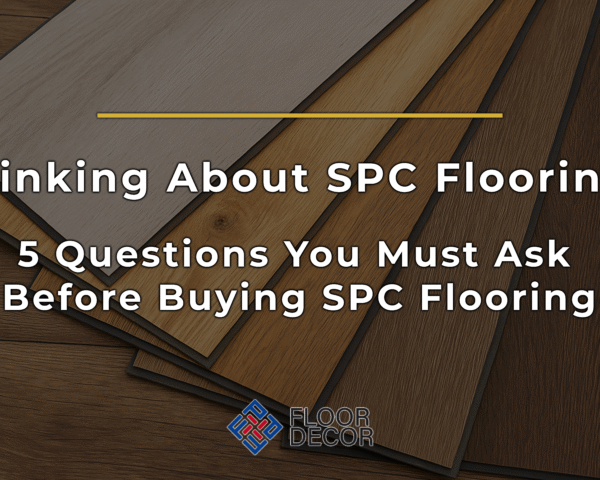5 Common SPC Hybrid Flooring Installation Mistakes (And How to Avoid Them)
SPC hybrid flooring has quickly become a favourite in New Zealand homes, thanks to its waterproof nature, durability, and sleek modern look.
🕒 4 min read


🏡 Your floors are the foundation of your home don’t leave them to chance. But installing SPC hybrid flooring isn’t just about clicking a few planks together and calling it a day. Many homeowners and even some installers make avoidable mistakes that can cost thousands in repairs or replacements down the line.
Whether you’re planning a DIY project or hiring a professional, knowing these five common mistakes can save you time, money, and a whole lot of stress.
1. Skipping Proper Subfloor Preparation
SPC hybrid flooring is incredibly strong, but it’s only as good as the surface it’s laid on.
️ ⚠️ Common Mistake Alert: Many people think minor bumps or dips won’t matter but they will. If the subfloor isn’t perfectly prepared, it can cause your SPC hybrid planks to shift, gap, or even break over time.

🔧 Best Practice:
- Ensure your subfloor is level within 3mm over 2 metres.
- If your floor is uneven, grind down high spots or use a professional floor-levelling compound to fill low areas.
- Remove all debris, old adhesives, and bumps.
- Check moisture levels, especially if installing over concrete. Use a moisture barrier if needed.
2. Installing Without Expansion Gaps
Installing Without Expansion Gaps. SPC hybrid flooring may not expand and contract as much as timber, but it still needs breathing room.
️ ⚠️ Common Mistake Alert: Tight-fitted floors with no gaps are bound to buckle with temperature changes.
🔧 Best Practice:
- Always leave a 6-10mm expansion gap around the perimeter of the room.
- Use spacers to maintain even gaps during installation.
3. Overlooking the Locking Mechanism
The strength of SPC hybrid flooring lies in its locking system.
️ ⚠️ Common Mistake Alert: Forcing planks together or skipping the “click” can weaken the connection and shorten the life of your floor.
🔧 Best Practice:
- Follow the manufacturer’s instructions carefully for each click-lock system.
- Ensure you hear and feel the “click” that signifies a secure lock.
- Tap lightly with a rubber mallet if needed (never force).
4. Choosing the Wrong Underlay (or Ignoring Built-in Underlay)
Many SPC hybrid floors come with an integrated underlay.
️ ⚠️ Common Mistake Alert: Adding unnecessary underlay can weaken the locking system, causing floor movement.

🔧 Best Practice:
- If your SPC hybrid flooring has attached underlay, you don’t need an additional one.
- Only use a separate underlay if specifically recommended by the manufacturer.
- Always ensure underlay is waterproof if installing in moisture-prone areas.
5. Installing Cabinets on Top of SPC Hybrid Flooring
One commonly overlooked mistake is installing heavy kitchen cabinets or fixed structures on top of SPC hybrid flooring.
️ ⚠️ Common Mistake Alert: Floating floors need room to move heavy fixtures trap the flooring, leading to buckling and damage.
🔧 Best Practice:
- Always install your cabinets and fixed furniture before laying the SPC hybrid flooring.
- Leave appropriate expansion gaps around heavy fixtures to allow the flooring to move naturally.
Bonus Tip: Leave a Small Gap Under Skirting Boards
️ ⚠️ Common Mistake Alert: After flooring installation, fixing skirting boards tightly against the floor can restrict natural movement and cause issues over time.
🔧 Best Practice:
- When installing skirting boards, leave a 1mm gap underneath to allow the SPC hybrid flooring to expand and contract freely.
- This small gap prevents buckling and helps maintain the floor’s integrity over the years.
Your Flooring Deserves the Right Start
SPC hybrid flooring is designed to last for decades but only if installed correctly. Avoiding these common mistakes ensures your floor stays beautiful, stable, and worry-free for years to come.

Can I install SPC hybrid flooring myself?
Yes! Many SPC hybrid flooring systems are designed for easy DIY installation. Just make sure to follow all preparation steps carefully, especially subfloor leveling and expansion gaps.
Do I need underlay for SPC hybrid flooring?
Most SPC hybrid floors come with a built in underlay. Adding extra underlay can compromise the locking system unless specifically recommended by the manufacturer.
Can SPC hybrid flooring be installed in kitchens and bathrooms?
Absolutely. SPC hybrid flooring is 100% waterproof, making it ideal for wet areas like kitchens, bathrooms, and laundries.
What happens if I install cabinets on top of SPC hybrid flooring?
Installing cabinets on top of floating SPC hybrid flooring can cause buckling or damage. Cabinets should be installed first, and flooring should be laid afterward.
How do I maintain SPC hybrid flooring?
SPC hybrid flooring is very low maintenance. Regular sweeping or vacuuming and occasional damp mopping with a gentle cleaner will keep it looking beautiful for years.
Is SPC hybrid flooring noisy to walk on?
SPC hybrid flooring is quieter than traditional laminate thanks to its rigid core and attached underlay (if included). If sound reduction is important, choose a floor with a quality built in acoustic backing or use a suitable sound rated underlay where recommended.
Can SPC hybrid flooring be laid over tiles or existing floors?
Yes, in many cases SPC hybrid flooring can be installed over flat, hard surfaces like tiles, vinyl, or timber as long as the subfloor is level and stable. However, make sure grout lines or uneven edges are smoothed out, and always follow manufacturer guidelines.
How long does SPC hybrid flooring last?
SPC hybrid flooring is designed for long term durability. With proper installation and care, it can last 15–25 years or more. Many brands (like Deko) offer warranties of 20–50 years, especially for residential use.





